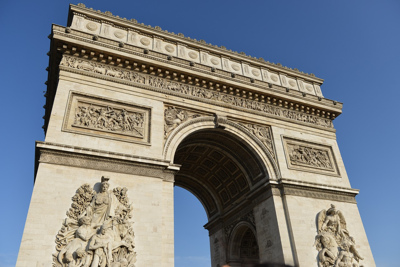
The Prix de l’Arc de Triomphe meeting is one of the richest and most iconic horse race fixtures in the world and is held on the first weekend in October over the Saturday and Sunday. The meeting includes no fewer than eight Group 1 races throughout what is thought to be one of the most absorbing weekends racing in the entire calendar.
The meeting is held at Longchamp racecourse, which is situated in central Paris, France. Due to extensive improvements in facilities at the track, it’s had a two-year layoff in 2016 and 2017 where the meeting ran at Chantilly to the north of Paris, retuning to Longchamp in 2018.
Whilst all the races are top drawer, the highlight of the weekend is without doubt the Prix de l’Arc de Triomphe, which is widely regarded as one of the most prestigious and richest horse race in the world. Tens of thousands of visitor’s flock to the course from all over Europe and even globally, just to get a glimpse of some of the world’s best flat racing.
- In This Article:
- Major Races
- Course
- Supporting Races
- Statistics
- History
Arc Weekend Major Races
As October rolls around, the eyes of the racing world turn to France as they host one of the world’s greatest horse races, the €5,000,000 Prix de l’Arc de Triomphe.
| Day | Race | Grade / Length | Last Winner |
|---|---|---|---|
| Sunday | Prix de l’Arc de Triomphe | Group 1 / 1m 4f | Ace Impact (2023) |
Outside of the main event there are sixteen other races across Saturday and Sunday, eleven of which are Group races. Raiders will be sent from all over the globe and as always there will be no shortage of British and Irish interest across the Channel.
In addition, there are also two Group 1 purebred Arabian horse races. On Saturday there is the Arabian Trophy Des Juments for fillies. On Sunday there’s €1,000,000 up for grabs in the Qatar Arabian World Cup.
The Course at Longchamp
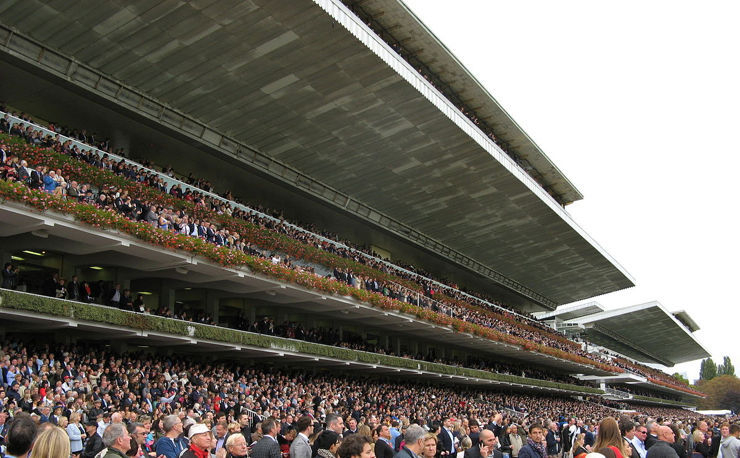
Longchamp is undoubtedly one of the most iconic racecourses in the world, let alone France. The 57-hectare site is located on the Route des Tribunes in the Bois de Boulogne, Paris. It’s been designed to be used exclusively for flat racing, but the proximity of the racecourse to the centre of Paris means that it’s often seen as a ‘high society’ outing for many of the rich and famous within the city.
The sheer size of Longchamp means that it can cater for races ranging from 1,000m to 4,000m, with a staggering 46 different starting points throughout. A capacity of 50,000 people means it’s the biggest in France and as a result, gets over half of the Group 1 races that are run in France.
The track itself has many different layouts, but it’s most famed for its hill that runs up towards the home straight, providing a brutal test even for the strongest of horses. The hill has found out many a top-level horse and it’s important for jockeys to time their run-in order to succeed. Many trainers will only use a handful of jockeys for their main horses, jockeys who have extensive knowledge of the track for this exact reason. Go too soon and the horse has next to no chance in getting up the bank first.
The Prix de l’Arc de Triomphe
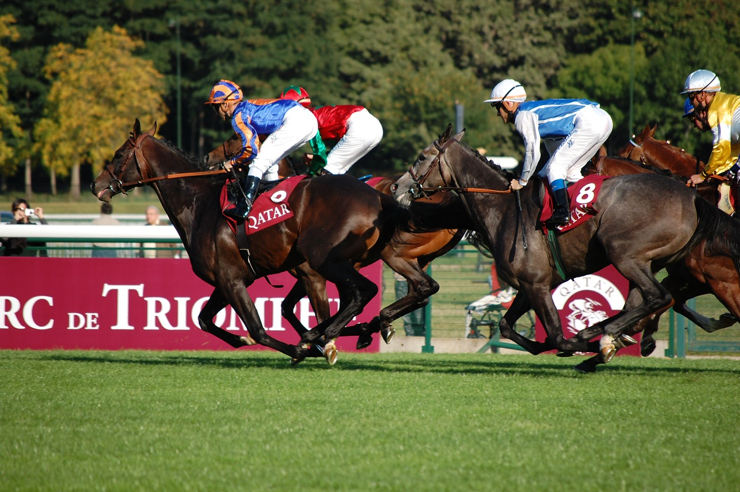
There are few Group 1 flat races that are held in as high regard as the Prix de l’Arc de Triomphe. The race has been running since 1920 and with it has seen some of the greatest horses to have graced the planet win and compete.
The race is run over 1½ miles and is commonly known as simply ‘The ‘Arc’. The prize money of €5 million in 2023 make it the richest turf horse race in the world and the 6th of any race, only behind the Saudi Cup, Dubai World Cup, the Everest, Dubai Turf and Dubai Sheema Classic.
The French, and even all horse racing fanatics for that matter, see the Arc as a festival, rather than just a horse race. In fact, a famous saying in France is that of “Ce n’est pas une course, c’est un monument”, which translates to “It’s not a race, it’s a monument”.
The Arc’s first appearance was in 1920 with the first race being won by Comrade. As part of his winnings, the owner was able to take home 15,000 francs. As the race continued to grow, it was able to secure funding from the lottery, which enabled to continued financial support it needed to keep with other Group 1 races around Europe and in particular, the UK.
Lottery funding ended in 1938 and the race took a brief gap in 1939 and 1940 due to the war. But, as racing continued to grow following the war, the funding returned in 1949, offering up a huge jackpot of 50 million francs. Obviously, this sum of money really started to put the race on the map and attracted horses from all over the world.
The lottery money started to die out in the seventies and by 1982 had disappeared altogether. Fortunately, the Arc was already considered to be one of the best races in the industry, so gaining sponsorship for the race wasn’t all that difficult.
The current sponsor for the race is Qatar Racing who have been the main funding source for the race. When they became involved in 2008 they increased the prizemoney from €2 million to €4 million, that sum has increased once again to a peak of €5 million, first reached in 2019.
Statistics
A lot of punters will tell you that the Arc is one of the toughest races to call all year. The quality of the field is almost unrivalled an with so many proven winners that have been trained exactly for this race, it means that picking a winner can be tough.
The age of the horse is often something that is worth considering. Three-year-old horses will be carrying a weight 56kg, whilst horses 4-years-old and above will have to carry 3kg more, at 59kg. This often tends to favour the slightly younger horses rather than the old-guard. Given that only one horse over the age of five has ever won the race (Motrico, 1930 aged 7), it seems to stand up pretty well.
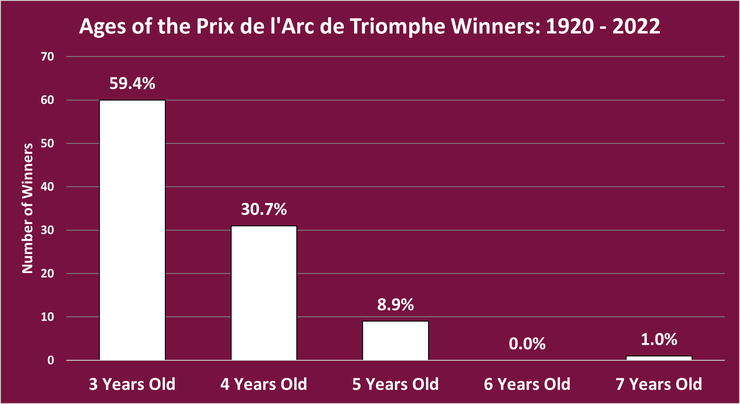
It’s also pretty interesting to see in that no horse has been able to win the Arc on more than two occasions. There are eight horses that have won twice, which are Ksar, Motrico, Corrida, Tantieme, Ribot, Alleged, Treve and, most recently Enable.
The leading jockey in the history of the Arc is the world renowned horseman Frankie Dettori. He’s been able to win the race six times over an illustrious career, with his first win coming in 1995 on Lammtarra. He’s also won twice with on Enable in 2017 and 2018.
The leading trainer is Frenchman, Andre Fabre. He’s been able to win the race on eight occasions, ranging from 1987 up his last win in 2019.
Arc Weekend Supporting Races
The two day meeting means that the races come thick and fast for Arc weekend. The Saturday is seen as warm up to the Sunday and the Prix de l’Arc de Triomphe itself but there’s still plenty of quality racing to take in with ten races in total.
Saturday’s Full Racecard in 2023
| Time | Race | Grade / Length |
|---|---|---|
| 12:23 | Prix Chaudenay | Group 2 / 1m 7f |
| 12:58 | Arabian Trophy des Juments | Group 1 (PA) / 1m 2f |
| 13:33 | Prix du Cadran | Group 1 / 2m 4f |
| 14:15 | Prix de la Place des Vosges | Handicap / 1m 4f |
| 14:58 | Haras de Bouquetot | Class 2 / 1m |
| 15:33 | Prix de Royallieu | Group 1 / 1m 4f |
| 16:08 | Prix Daniel Wildenstein | Group 2 / 1m |
| 16:43 | Prix Dollar | Group 2 / 1m 2f |
| 17:18 | Prix de la Place de la Concorde | Handicap / 1m |
| 17:50 | Prix de la Place Dauphine | Handicap / 1m |
The two Group 1s come in the form of the Prix de Royallieu and Prix du Cadran. The former was previously a Group 2, promoted in 2019 when it was won by Epsom Oaks heroine Anapurna for John Gosden and Frankie Dettori. There is also an Arabian Group 1, contested by purebred Arabian Mares.
The race which kicks-off the whole meeting is the Group 2 Prix Chaudenay, the first of three Group 2s on Saturday which include the Prix Daniel Wildenstein and the Prix Dollar.
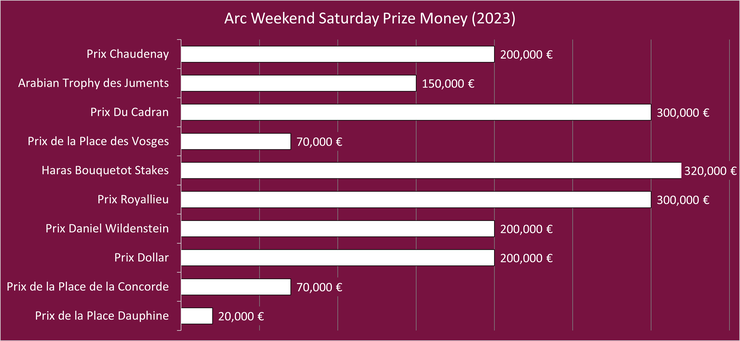
Whilst many people are only interested in the Arc, the Sunday actually includes one of the biggest days racing that you can find anywhere on the planet, with six Group 1 races and an Arabian Group 1 before closing with two big field handicaps.
Sunday’s Full Racecard in 2023
| Time | Race | Grade / Length |
|---|---|---|
| 13:15 | Prix Jean-Luc Lagardere | Group 1 / 1m |
| 13:50 | Prix Marcel Boussac | Group 1 / 1m |
| 14:25 | Arabian World Cup | Group 1 (PA) / 1m 2f |
| 15:05 | Prix de l’Arc de Triomphe | Group 1 / 1m 4f |
| 15:50 | Prix de l’Opera | Group 1 / 1m 2f |
| 16:25 | Prix de l’Abbaye | Group 1 / 5f |
| 17:00 | Prix de la Foret | Group 1 / 7f |
| 17:30 | Grand Handicap des Flyers | Handicap / 7f |
| 18:00 | Prix de la Place de l’Etoile | Handicap / 1m 2f |
The biggest race outside of the Arc, in terms of prize money at least, is that the Arabian World Cup. This race has only been running since 2008, but will come with a hefty prize pool of €1,000,000 in 2023.
Whilst all the supporting races are able to strongly stand on their own two feet, offering some amazing contests from the best horses in the world, the Prix de l’Abbaye de Longchamp is probably the best known out the lot. With a prize fund of €350,000 (2023), it’s by no means the richest race of the weekend, but it is probably the most important after the Arc.
The l’Abbaye has been a Group 1 race since 1976 and with it is run over just 5f, making it one the biggest sprint races over the flat. The race also became part of the Breeders’ Cup Challenge Series in 2009 to gain entry to the Turf Sprint but was removed in 2011 to reduce the number of feeder races into the event. However, it is still heavily recognised by the judging panel for the Turf Sprint and more often than not, the winner will be featured.
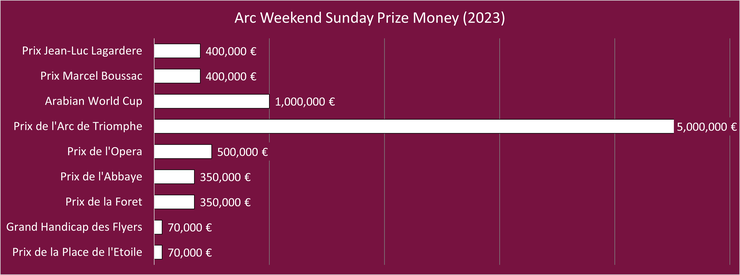
Whilst all races hold strong merit, for us the next most important is also that of the oldest, in the form of the Prix Jean-Luc Lagardere. The race was first run in 1853 and comes with a prize fund of €400,000 in 2023. At 1400 metres (7 furlongs), this race is one for the milers dropping down or the sprinters stepping in trip and again is added to the Breeders’ Cup Challenge Series, with the winner gaining entry into the Juvenile Turf race. The likes of Rock of Gibraltar and Arazi have seen success in this race.
History
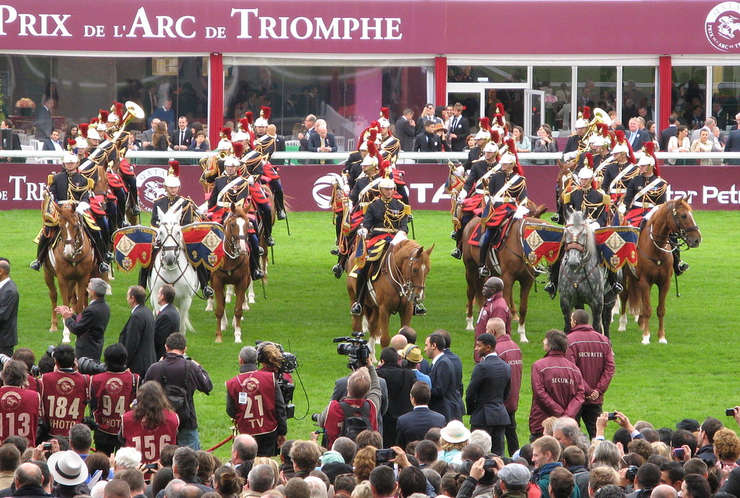
A former governing body of French racing, known as the Societe d’Encouragement, were trying to propel the status of French horse racing around the world. They already had the Grand Prix de Paris and Prix du Conseil Municipal, bringing in horses from all over the world.
The proposal for a third race to create a trio was put forward in 1920 and was designed to showcase French thoroughbred breeding. The name came as a result of the victory parades that took place around the Arc de Triomphe in Paris after the war. It was decided that Longchamp would host the race and the rest, as they say, is history.
Marcel Boussac
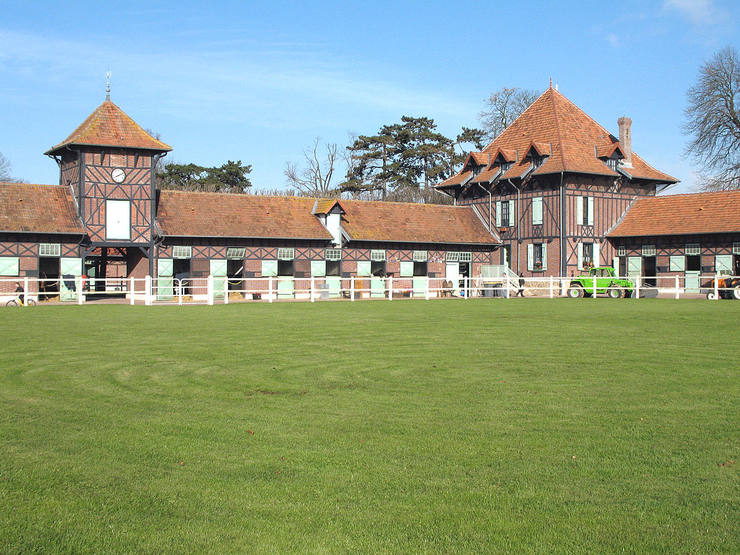
Marcel Boussac is the joint leading owner for the Prix de l’Arc de Triomphe with six wins in total, ranging from 1936 to 1949. Boussac’s background was in textiles though and it was here where he made his money initially, setting up Christian Dior’s latest fashion house in Paris is one of his strongest claims to fame.
But, as an avid horse racing fanatic, Boussac was able to purchase a breeding farm, Haras de Fresnay-le-Buffard, in Lower Normandy and the Haras de Jardy (above), buying and selling horses from Europe and the United States. His eye for picking the right horses and being able to get the best out of them was simply staggering.
Boussac’s stable picked up leading trainers award and topped the money list on 14 times. He also became the top breeder in the country, winning that award seventeen times. Boussac’s success wasn’t just limited to France either, winning the likes of the Epsom Derby, Epsom Oaks, 2,000 Guineas, St Leger, Ascot Gold Cup and plenty others throughout the UK.
Andre Fabre
Fabre began life as a stable boy, before moving on to becoming a jump jockey himself, winning over 250 races. He had a keen eye for flat racing horses though and stated training horses in the early 1980’s. Since then, he’s won the French Champion Trainer on 24 occasions, including 21 years in a row from 1987 to 2007. He’s been able to train winners of the Breeders Cup racing series and others around the world, including the Epsom Derby.
Andre Fabre is the leading trainer in the history of the Arc, with eight wins to his name ranging from 1987, to his most recent in 2019.
Trainer Andre Fabre’s Arc Winners
| Year | Horse (Age) | Jockey | Owner(s) |
|---|---|---|---|
| 2019 | Waldgeist (5) | Pierre-Charles Boudot | Gestut Ammerland & Newsells Park |
| 2006 | Rail Link (3) | Stephane Pasquier | Khalid Abdullah |
| 2005 | Hurricane Run (3) | Kieren Fallon | Michael Tabor |
| 1998 | Sagamix (3) | Olivier Peslier | Jean-Luc Lagardere |
| 1997 | Peintre Celebre (3) | Olivier Peslier | Daniel Wildenstein |
| 1994 | Carnegie (3) | Thierry Jarnet | Sheikh Mohammed |
| 1992 | Subotica (4) | Thierry Jarnet | Olivier Lecerf |
| 1987 | Trempolino (3) | Pat Eddery | Paul de Moussac & Bruce McNall |
Fabre also has an excellent record in the Arc Weekend’s other Group races, winning each of them at least once with the exception of the five furlong Prix de l’Abbaye. This shows that the sprints are perhaps not Fabre’s forte, though he did win the six furlong July Cup in 1988 with Soviet Star. Andre Fabre is the leading trainer in the Prix Chaudenay with an incredible twelve victories, and joint leading trainer in the Prix Dollar with seven.
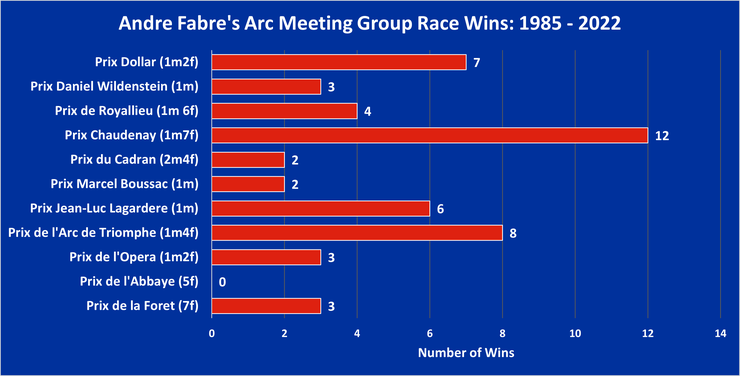
Sea the Stars Creates History in 2009
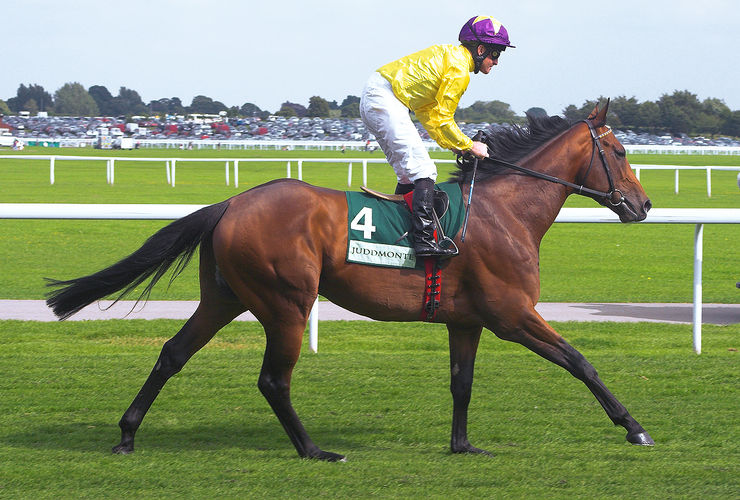
Sea The Stars has gone down as one of the best Irish thoroughbreds of all time. Owned by Christopher Tsui and trained by John Oxx, the horse has managed to win just about everything in an illustrious, if relatively short career.
There is no doubt that the horses win in the 2009 Arc was one of the many highlights to this impressive horse’s career, but the fact that he had also won the 2000 Guineas and the Epsom Derby in the same season is nothing short of remarkable; a feat that has never been achieved before or since.
The horse managed to earn over £4 million for its troubles, with other wins including the Champion Stakes, Eclipse Stakes, Beresford Stakes and the International Stakes. Sea The Stars also reached number 1 in the world rankings for thoroughbreds in 2009 and had a highest Timeform rating of 140.